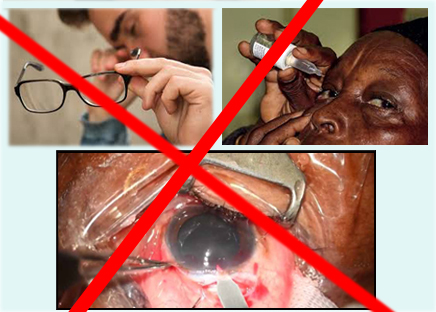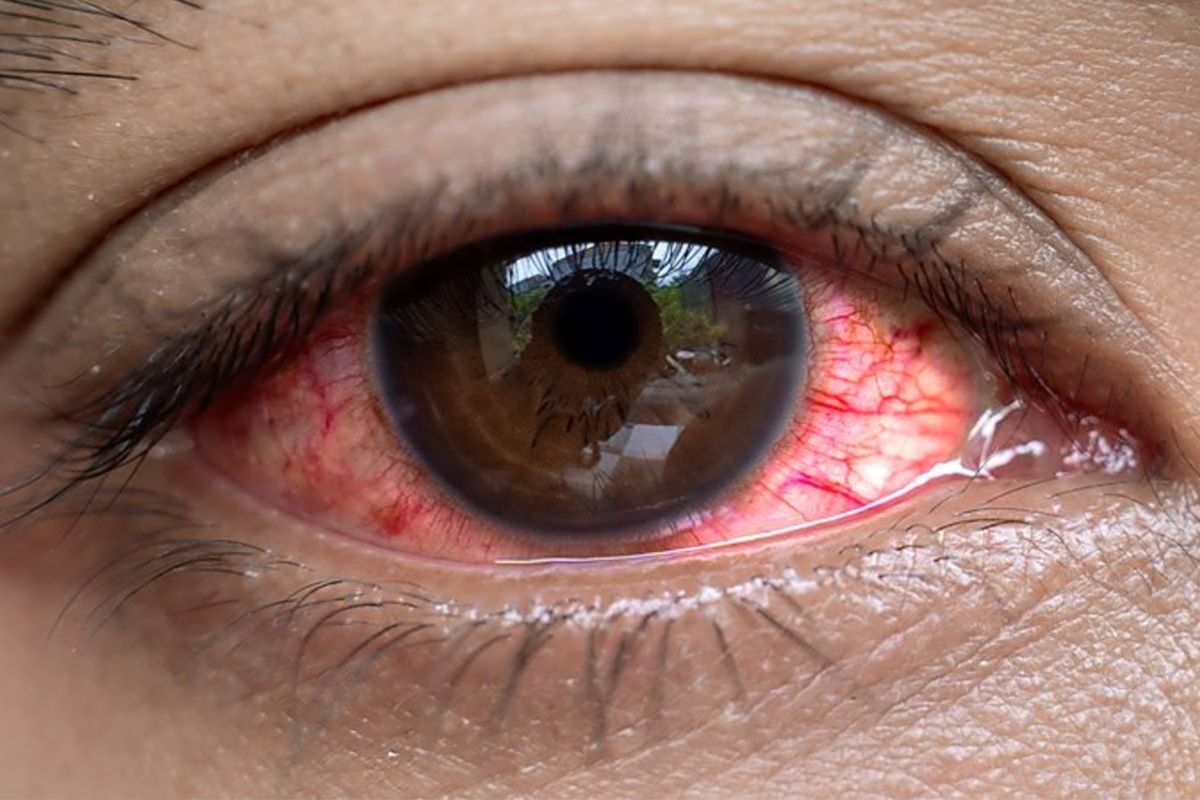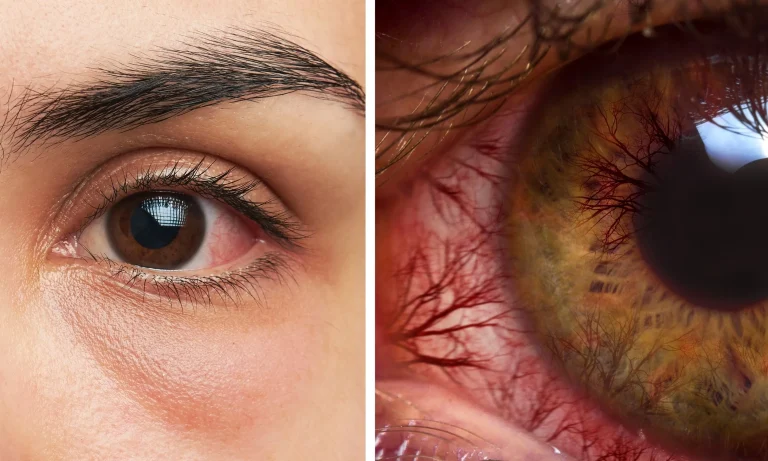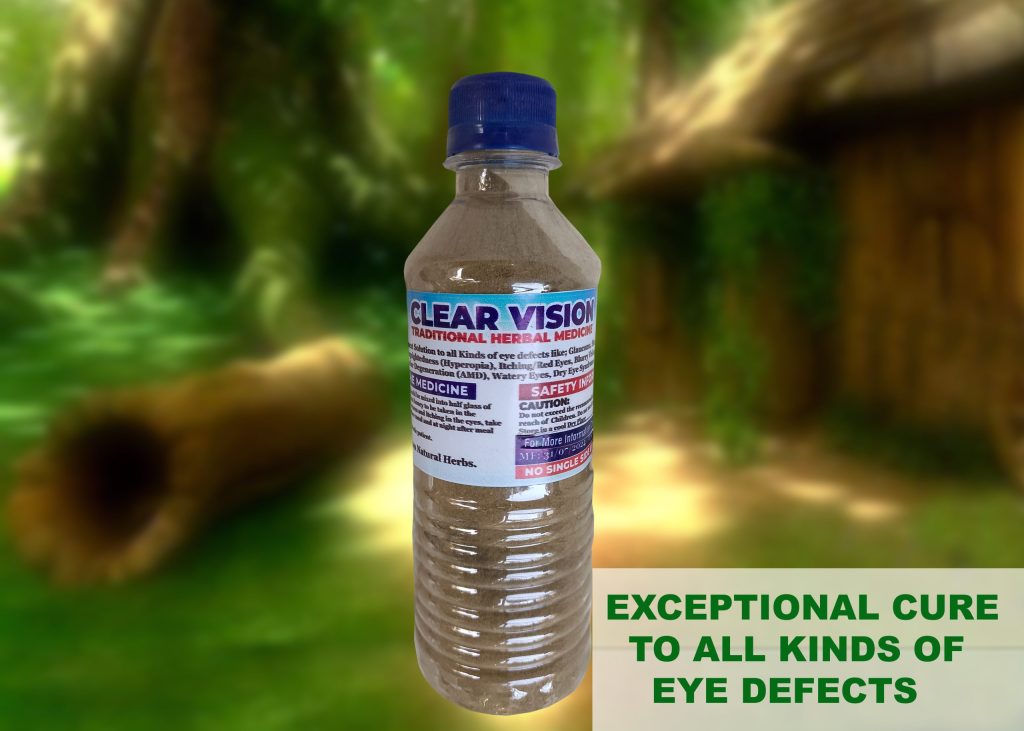"Don't let eye diseases steal your vision. early detection and treatment can save your sight TODAY!"
ATTENTION ! IF YOUR EYE SIGHT IS NOT 100% IN GOOD CONDITION, YOU ARE LIKELY TO FACE THESE DANGERS. HOWEVER, SOLUTIONS ARE PROVIDED BELOW
Restore YOUR VISION


The eye is an essential part of the human life. Hence, a damage to the eye can be very disastrous, leading to psychological effects, impacting an individual’s mental and emotional well-being. The gradual loss of vision or persistent visual impairment can lead to anxiety, depression, and a sense of helplessness. Difficulty in performing daily activities, such as reading, driving, or recognizing faces, can reduce independence and self-esteem. Social isolation often occurs as individuals may avoid activities they once enjoyed or feel embarrassed about their condition. The constant worry about further vision loss and the potential for blindness can also cause chronic stress. Overall, the psychological burden of living with an eye defect can significantly diminish one’s quality of life.
Don’t wait until it’s too late; take action now to protect your vision.

Visual impairment and blindness will definitely reduce your quality of life drastically, but many eye conditions are preventable or treatable with the right medication. Many people have lost their eye sight majorly because they lack access to the right information needed to totally cure their eye diseases, thereby depending on the usual SYMPTOM MANAGEMENT which often focuses on managing and mitigating symptoms rather than a total cure from the root cause.
Don’t wait until it’s too late; take action now to protect your vision.
"Seeing Clearly: The Power of Detection and Treatment"
Dealing with an eye defect can be daunting, but understanding the importance of early detection and treatment can make a world of difference.
Whether you’re experiencing blurred vision, difficulty seeing at night, or persistent eye strain, taking a curative action with the help of an effective eye disease medicine will prevent further deterioration prevent blindness and preserve your quality of life.
According to WHO | Regional Office for Africa,
Approximately 26.3 million people in Africa suffer from some form
of visual impairment each year, including both low vision and blindness.
Among these, 20.4 million have low vision, and around 5.9 million are blind.
This represents a significant portion of the global visually impaired population,
with 15.3% of the world’s blind population residing in Africa.
Efforts to combat visual impairment in Africa include addressing both communicable and noncommunicable eye conditions. Diseases like trachoma and onchocerciasis (river blindness) are major cause. Noncommunicable diseases such as cataracts, glaucoma, and diabetic retinopathy are on the rise due to aging population.

IT IS VERY IMPORTANT TO NOTE THAT 22.4% OF AFRICANS WITH VISUAL IMPAIRMENT END UP BEING COMPLETELY BLIND~(WHO)
This could be traced to limited access to eye care services, lack of awareness/ignorance, and the prevalence of infectious diseases like trachoma and onchocerciasis.
Are You Suffering From;
- Glaucoma
- Cataract
- Age-related Macular Degeneration (AMD)
- Myopia (Shortsightedness)
- Hyperopia (Longsightedness)
- Itching/Red eyes
- Blurry Vision
- watery eyes
- Diabetic Retinopathy
- Dry Eye Syndrome
- Conjunctivitis (Pink Eye)
- Retinal (Crossed Eyes)
- Amblyopia (Lazy Eye)
- Presbyopia
- Blepharitis
- Corneal Diseases
- Optic Neuritis
...THIS IS THE INFORMATION THAT WILL SAVE YOU
Eye Defect : The Reason You can't Really See Clearly
Eye defects, also known as vision problems or refractive errors, are conditions that impair the eye’s ability to focus light correctly onto the retina, resulting in blurred or distorted vision. These defects can significantly affect daily activities and overall quality of life, making their understanding and management essential for maintaining good eye health.
SOME OF THE MOST COMMON EYE DEFECTS:
GLAUCOMA
Glaucoma is a group of eye diseases that damage the optic nerve, often due to increased pressure in the eye (intraocular pressure), leading to vision loss and blindness if untreated. It typically progresses slowly and may not present symptoms until significant vision loss occurs. Risk factors include age, family history, and certain medical conditions.

CATARACT
Cataract is a clouding of the natural lens in the eye that affects vision. It’s a common age-related condition that can cause blurry or distorted vision. The most common causes are; Aging, Injury or trauma, Diabetes, Certain medications, Prolonged exposure to UV radiation, Genetic disorders, etc. This may lead to vision loss or total blindness if not treated on time.
AGE-RELATED MACULAR DEGENERATION (AMD)
Age-related macular degeneration (AMD) is a common eye condition that affects the central part of the retina called the macular, leading to loss of central vision. It primarily affects people over 50 and progresses in two forms: dry AMD, characterized by the thinning of the macular, and wet AMD, marked by abnormal blood vessel growth under the retina. Symptoms include blurred or wavy central vision and difficulty recognizing faces or reading.
MYOPIA, or nearsightedness(shortsightedness). People with myopia can see nearby objects clearly, but distant objects appear blurry. This condition arises when the eyeball is too long or the cornea is too curved, causing light rays to focus in front of the retina instead of directly on it. Conversely.
HYPEROPIA, or farsightedness, allows for clear distant vision while close-up objects appear blurry. Hyperopia occurs when the eyeball is too short or the cornea lacks adequate curvature, resulting in light focusing behind the retina.
What Causes Eye Defects?
- Aging
- Infections: Bacterial, viral, or fungal infections can damage eye tissues, leading to defects.
- Physical injury to the eye can cause immediate or delayed vision problems
- Chronic Diseases: Conditions like diabetes, hypertension can lead to eye defects
- Lack of essential nutrients, particularly vitamin A.
Why Those Glasses Might Cause You More Damage
Using medicated glasses, which are designed to deliver medication directly to the eye, can have several drawbacks. These include discomfort or irritation from prolonged wear, a heightened risk of eye infections due to improper maintenance, and limitations in the types and dosages of medications that can be effectively administered through this method. Additionally, the release rate of the medication may be inconsistent, potentially leading to fluctuating therapeutic effects and necessitating supplementary treatments for comprehensive care.
Have you not spent enough on temporary eye treatments while there is a permanent solution to your eye disease?
Eye defects can become a significant financial burden for patients due to the costs associated with diagnosis, treatment, and ongoing management. Regular eye exams, prescription eyewear, contact lenses, and specialized treatments such as surgeries or medications can quickly add up, often requiring frequent updates and adjustments. Additionally, severe vision impairments may necessitate expensive assistive devices, home modifications, or personal care services. Indirect costs, such as lost productivity, reduced earning capacity, and transportation for medical appointments, further compound the financial strain, making eye defects a substantial economic challenge for many individuals and their families.
Say Goodbye To Eye Glasses, Eye Drops And Eye Surgery

Don’t wait until you completely go blind; take action now to save your vision.
THE GOODNEWS IS HERE. THERE IS AN ANCIENT METHOD OF CURING EYE PROBLEMS, BE IT GLAUCOMA, MYOPIA, HYPEROPIA, etc.
While on the course to freeing humanity from the burden of various ailments that have driven down the quality of life in our world today, our team of researchers have discovered a one time cure to eye diseases/defects.
Most people have neglected the free gifts of nature to their detriments, it is a thing of joy and relief that the world is beginning to understand this , thereby making a shift back to the proven methods of the old.

THIS OFFERS PERMANENT CURE
CLEAR VISION TRADITIONAL HERBAL MEDICINE: This medicine is packed with essential natural vitamin that protects and heals your eyes from the inside out. It reduces inflammation in the eyes, improve blood circulation and promote a healthy blood flow to the eyes which is crucial for combating various eye conditions.
100% HERBAL, NO SINGLE SIDE EFFECT

Here`s a few of our customer's reviews. Please note that our customers' identities are carefully concealed for privacy purposes as it can only be revealed upon their approval.

DIRECTION ON HOW TO USE
Mix One (1) Teaspoon of the medicine into half glass of hot water and one spoon of original honey and be taken in the morning before meal. For severe cases and itching in the eyes, take it twice a day, in the morning before meal and at night after meal (before going to bed). Do not add honey if you are diabetic patient.


HOW MUCH DOES THE MEDICINE COST?
GET ONE BOTTLE FOR #25,000
GET TWO BOTTLES FOR #45,000
GET THREE BOTTLES FOR #60,000
GET FOUR BOTTLES FOR #75,000
PLEASE NOTE
Three(3) bottles of the clear vision herbal medicine is the recommended dosage for a permanent cure for a long time eye defect
PLEASE DO NOT SUBMIT THIS FORM IF YOU WILL NOT BE AVAILABLE TO RECEIVE THIS HERBAL MEDICINE WITHIN 24 HOURS
For More Information, Please Call/Whatsapp Us On 07038188228
This Site Is Not A Part Of The Facebook Website Or Facebook Inc. Additionally, This Site Is Not Endorsed By Facebook In Any Way.
FACEBOOK Is A Trademark Of FACEBOOK, Inc.